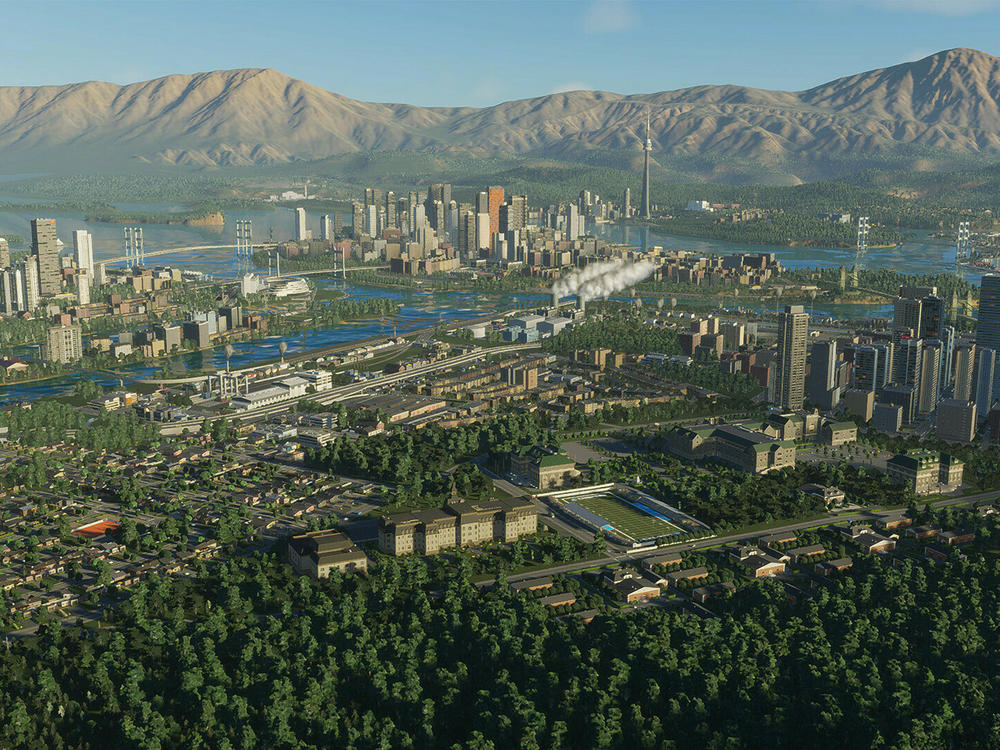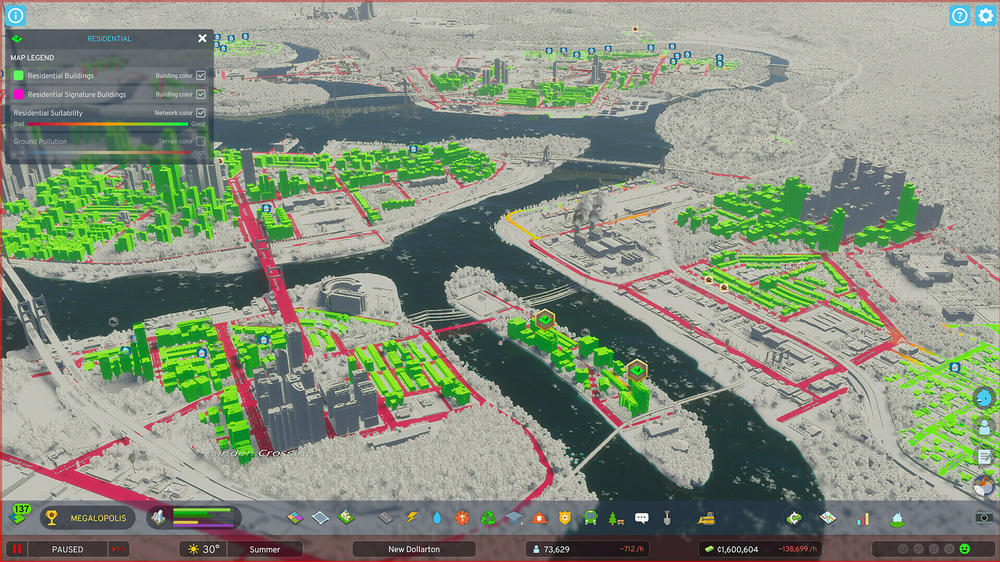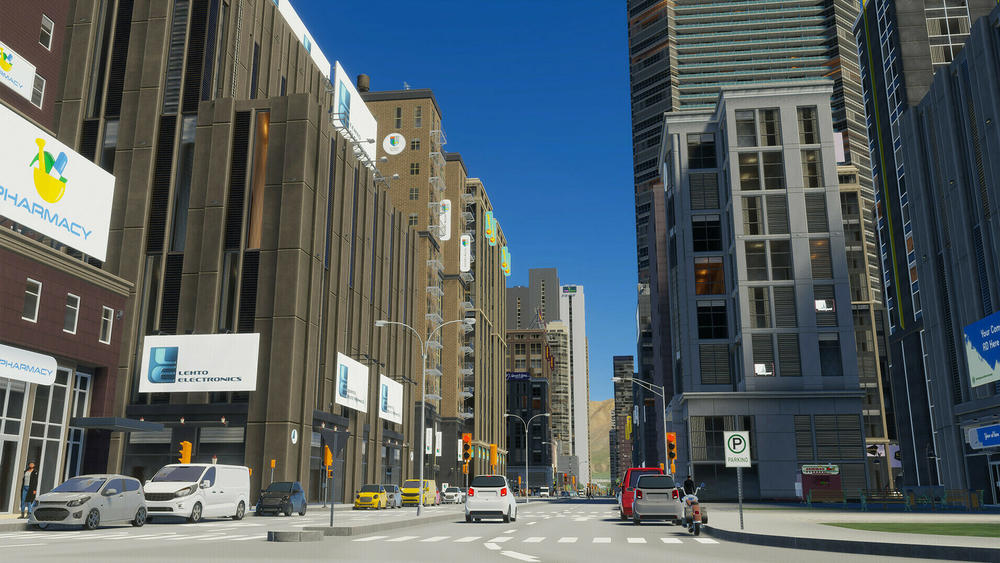Section Branding
Header Content
Cities: Skylines II makes city planning fun, gorgeous and maddening
Primary Content
I wouldn't call myself an avid gamer. I dabble in platformers, roguelikes and co-operative games. I'll indulge an RPG to let its story sweep me off my feet. But I hold fast to a gaming PC for one reason, and one reason only: to play the epic urban planning simulator Cities: Skylines. 46 hours into the new sequel, I've founded no fewer than twelve cities, terribly mismanaged roads, and spawned utter industrial pollution. But I've loved every minute of it.
So if you're anything like me — curious about a city's infrastructure and whether or not you could steward one on your own, complete with accurately modeled traffic and weather patterns, residential communities and their ever-present social media feed with plenty of feedback about your work — this is the game for you. It's like SimCity on steroids: a marvel of a simulator game, even without the community mods that will undoubtedly follow the release.
The grid (still) reigns
If you've ever played a city simulator, you'll know that well-considered roadways are key to a functional city, much as they are in real life. To my delight, C:SII makes it easier to build and customize roads — especially when they're on grids and parallels.
Grid mode makes it quick to design infrastructure not unlike Manhattan's, while new roundabouts can simulate the diagonal quadrant system like that of Washington DC's. Much to my frustration, my attempts to allow roads to sprawl toward a city center more organically like a western European city ended up with less space and some awkward gaps between buildings. Despite being developed by Finnish developer Colossal Order, the game's mechanics push you towards North American block-style cities.
To further delve into madness, I'm at my wit's end about traffic management no matter which map I attempt. Other than planting trees for noise pollution, I've only begun to scratch the surface of the customizable traffic features.
Five times the playable area, five times the chaos
I've started small cities on each map of the ten new maps, only growing the population to about 10,000. If you're anything like me, I tend to create cities over and over until I'm satisfied with a starting layout and its growth potential. There are seemingly boundless options in C:SII with vastly increased playable space.
Each map has different terrain, but they're all maddening. The initial area is smaller than in the first game, but you can start purchasing more tiles as soon as you earn the money. I'm particularly invested in the Archipelago Haven and the Mountain Village cities, mostly because I've spent time on real-world islands and dream about mountain life. The archipelago has been especially exciting to build because you can eventually connect isolated islands to each other as you buy non-adjacent tiles.
The devil in the details
One thing I didn't think I miss from the original game is the districting paintbrush tool. C:SII replaces it with a click-and-set node system that makes it impossible for districts to overlap. Contrastingly, the ability to assign facilities to districts makes for a more realistic challenge, as you manage resources and ensure your citizens have access to services within a reasonable distance of their dwellings.
But for all its enhanced systems, Cities: Skylines II has gotten the most hype around it's demanding, pristine graphics. For the sake of my aging PC, I began gameplay with the lowest quality settings. Let me tell you, it still looks glorious. The water seems more watery in how it glistens. The weather details are stunning. When I do crave insight into the minutiae of the archipelagic nightmare I'm creating, I use the cinematic camera mode to zoom in on buildings and the cars. That being said, I'm definitely pushing the limits of my computer to see exactly what this game can do. Who knows, maybe I'll have to invest in a heartier machine.
In the meantime, you can find me planting trees along the highways whose traffic mirrors that of Northern Virginia's stretch of I-395 heading into DC, as I settle into my second full time job of virtual traffic management.
Copyright 2023 NPR. To see more, visit https://www.npr.org.




